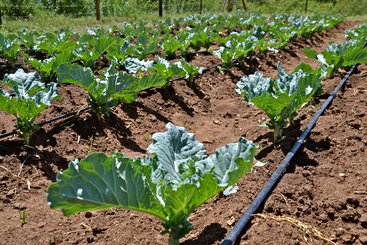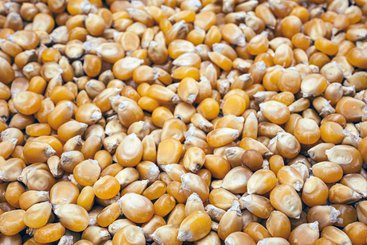While COP27 has shone a spotlight on the urgent need to transform agriculture and food systems to increase resilience to climate change and step up the fight against rising temperatures, there have been few measures to respond to the current food crisis that factor in climate and environmental impacts. This blog looks at what can be done differently and how the UNFCCC process can contribute.
COP27 held its first ever Food Day at a COP against a “backdrop of food insecurity and even famine”, a signal by the Egyptian Presidency of the urgency of transforming food systems to hit a triple win for people, climate and nature.
The food crisis has exemplified how food and energy interconnect – as mounting fertiliser and fuel costs have undermined production and raised the price of food – and how agriculture and food systems are intimately linked to climate and nature.
Yet, few publicised responses to the food crisis have addressed those connections and measures to tackle underlying climate and environmental drivers of the food crisis are far and few between. This misses an opportunity to build longer-term resilience, reduce greenhouse gas emissions from agricultural production and boost ecosystem health, delivering sustainable and healthy nutritional outcomes in the process. Worse still, many short-term responses run the risk of reproducing, entrenching and amplifying structural fragilities in the food system, undermining future food security.
What measures need to address
In the short term, immediate actions are needed to protect vulnerable households from the sharp increases in prices of wheat, maize and edible oil.
However, not far down the road is the imperative to increase the availability of food to stave off projected reductions in planted area and yields. There are three ways this could be done: increasing production through improving yields or increasing planted areas; switching grain out of other uses, such as animal feed; and changing diets to reduce the land, water and other inputs needed to produce food. Reducing losses along the food chain – from post-harvest crop loss and food waste – is also key to making the most of available production.
We have many of the tools at our fingertips for doing this, which – given political will and coordinated efforts – could change how we produce food, where it is produced and how it is used.
1. Accelerate and scale up implementation of existing programmes that already address climate and environmental issues in food production while enhancing food security.
Governments and investors could ramp up projects to decarbonise the fertiliser supply chain using technological improvements or scaling up circular economy approaches. National governments and international funders could increase resources to existing programmes to reduce post-harvest crop losses and encourage consumers and food companies to minimise food waste through communications campaigns.
2. Integrate measures with positive climate and environmental impacts into other existing programmes designed to boost food availability and access.
Employment-based social assistance programmes or public works programmes can combine short-term, cyclical social protection needs with longer-term livelihoods interventions that focus (at least in part) on ecosystem restoration and climate mitigation. Funders can also scale up nutrition-sensitive social assistance programmes, incorporating nutrition-sensitive social protection interventions into country and regional humanitarian responses.
3. Review proposed responses to the food crisis through a climate and environment lens.
Governments and international organisations should screen plans to increase production through measures to boost yields or expand cultivated area to assess their short- and long-term effects on climate and nature. Efforts to improve access to fertilisers need to be reviewed to ensure that they are:
- Providing targeted help through direct transfers to less well-off farmers who currently use mineral fertilisers rather than providing sweeping access to fertiliser at reduced costs, as farmers tell us themselves;
- Following global standards on fertiliser use efficiency and environmental standards to reduce emissions and pollution without impacting on crop yields;
- Scaling up initiatives to increase access to and use of organic fertilisers and adopt a circular economy approach between livestock and crop production.
Governments and international organisations can also improve monitoring of critical issues, strengthening real-time monitoring of land use change, combined with data on food and fertiliser prices, particularly in environmental hotspots, and heightening scrutiny of emerging land-based agricultural investment projects. They could also monitor short-term changes in consumption of animal products to see if demand for animal feed might fall as incomes are squeezed, freeing up production into markets where feed specifications make human consumption possible.
Over the longer term, more structural changes are needed in food system dynamics, including:
- Repurposing public support to food and agriculture to reform policies that incentivise harmful and or inefficient use of land, water and chemicals, redirecting resources to climate resilient and sustainable production.
- Supporting behavioural change in food consumption and food waste, for example, by producing tailored messaging for different consumer groups.
- Increasing investment in post-harvest crop storage infrastructure, techniques and knowledge transfer.
How to use the UNFCCC formal process to support sustainable food systems
How can we best use the UNFCCC process to support and accelerate the transition towards sustainable food systems both in the short and longer term? One way is to use the momentum and attention created by different COPs to launch and monitor initiatives that maintain the thread of activities on food systems transformation across COPs, attract funding and forge communities of intention and practice on food systems, such as the Policy Action Agenda on Sustainable Food and Agriculture, the Food and Agriculture for Sustainable Transformation Initiative (FAST) and the Global Fertilizer Challenge.
Agriculture and food systems also need to have a strong formal representation within the UNFCCC process: the Paris Agreement targets cannot be achieved without addressing emissions from food systems. Since 2017, the Koronivia Joint Work on Agriculture (KJWA) has been the main channel for highlighting the two-way links between agriculture and climate change. COP27’s Sharm el-Sheikh Implementation Plan and the more detailed text on climate action on agriculture and food security acknowledge these links and endorse a four-year plan on agriculture and food security.
However, moving from technical discussions to concrete action for agriculture and food systems will be challenging. It will require concrete financial commitments to decarbonise agriculture and build resilience to climate change – both through the existing financial mechanisms associated with the UNFCCC and repurposing public national support to agriculture. The UNFCCC can provide helpful checkpoints for the pathway to climate-compatible agriculture but national governments, international organisations and civil society must push for climate and nature to be factored into every decision on agriculture and food systems, whatever the occasion.



